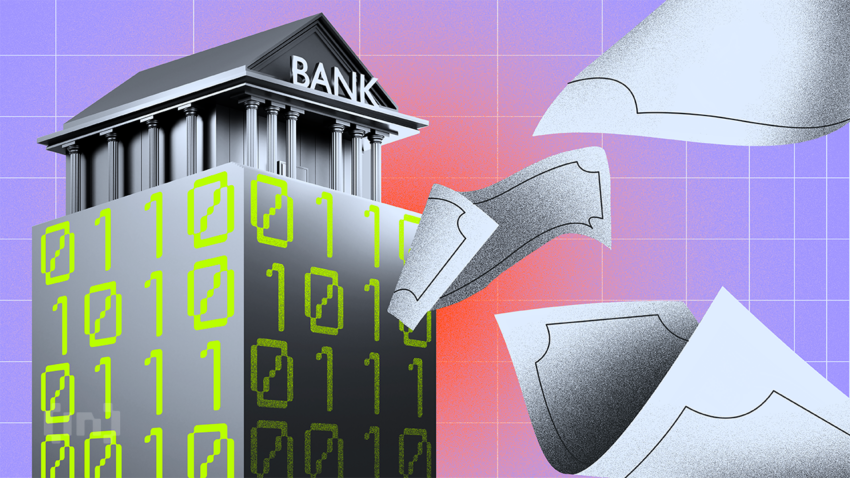As central banks worldwide explore the concept of Central Bank Digital Currencies (CBDCs), the potential introduction of a digital dollar in the United States has sparked lively debate.
What are the dangers associated with the digital dollar and the potential risks versus the perceived benefits?
What Is a Central Bank Digital Currency (CBDC)?
A CBDC is a digital representation of a country’s central bank’s currency accessible to the public. Unlike the digital money used in bank accounts and digital wallets, which are liabilities of commercial banks, a CBDC is a central bank liability.
While physical currency and digital balances held by commercial banks at the central bank currently exist, a CBDC aims to provide an additional, secure, and efficient payment option.
The Federal Reserve (Fed) is considering a CBDC to “enhance the safety and efficiency of the US domestic payments system.” This is due to the rise of new private-sector financial products and services, such as digital wallets, mobile payment apps, cryptocurrencies, and stablecoins.
A CBDC could offer benefits like convenient access to central bank money. It could provide a platform for innovative financial products and services, faster and cheaper payments, and greater financial inclusion for consumers.
Nonetheless, an American CBDC also presents risks and policy concerns. These include its impact on financial sector market structure, credit availability, and cost, financial system safety and stability, and monetary policy effectiveness.
The Fed’s approach to a potential CBDC emphasizes benefits that exceed costs and risks. It aims to complement the current US dollar and financial services to balance consumer privacy with transparency to prevent criminal activities.
Dangers of a Digital Dollar: The Risks of CBDCs
Loss of Privacy
One of the most significant dangers of the digital dollar is the potential loss of privacy for users. Unlike physical cash transactions, which can be anonymous, digital transactions can be easily tracked and monitored.
This means the government could have unprecedented access to citizens’ financial data. In turn, raising concerns about surveillance and the erosion of financial privacy.
With the ability to track digital transactions, governments may be tempted to use this information to surveil citizens, leading to potential abuses of power. This could include tracking political dissidents and whistleblowers or simply monitoring the spending habits of ordinary citizens.
Bo Li, Deputy Managing Director at the International Monetary Fund (IMF), said:
“CBDC can allow government agencies and private sector players to program… targeted policy functions. By programming a CBDC, money can be precisely targeted for what people can own and what [people can do.]”
The potential for abuse raises serious concerns about eroding privacy rights in a digital currency environment.
Beyond government surveillance, the digital dollar could expose users’ financial data to third parties, such as corporations or advertisers. This could lead to commodifying personal financial data as companies seek to exploit this information for targeted marketing or other purposes.
Diminished Financial Freedom
In addition to privacy concerns, the digital dollar could erode financial freedom. With the potential for increased government control over financial transactions, individuals may find their ability to transact freely limited.
The digital dollar could make it easier for the government to freeze or seize assets. Freezing physical cash assets requires a court order, but a digital dollar could streamline this process. Therefore, raising concerns about due process and individual property rights.
Federal Reserve Governor Michelle Bowman maintains that this type of control could lead to politicizing how money is used.
“A CBDC that permitted this type of control not only has the potential to allow the government to limit certain types of private spending or limit access to banking accounts, it could also threaten the Federal Reserve’s independence.”
Central banks could implement negative interest rates more easily with a digital dollar, effectively penalizing savers and pushing them to spend or invest their money.
Representative Tom Emmer (R-MN) believes this could profoundly impact individual financial decision-making and autonomy. He maintains that a digital dollar represents “government-controlled, programmable money that can easily be weaponized into a surveillance tool.”
Cybersecurity Risks of CBDCs
The digital nature of the digital dollar makes it more susceptible to cyberattacks. Japan’s Vice Minister of Finance for International Affairs, Masato Kanda, believes that cyber-security is one of the main challenges CBDCs face.
Hackers could target the central bank or individual user accounts, potentially causing widespread disruption to the financial system.
A successful cyberattack on the digital dollar infrastructure could result in systemic risk, leading to a loss of confidence in the currency and the broader financial system. This could have severe economic consequences, as trust is a fundamental component of a functioning financial system.

Cybercriminals could also target individual users of the digital dollar. They may exploit security weaknesses or use social engineering techniques to access accounts. This could lead to severe financial losses for victims and undermine trust in the digital currency.
Exacerbating Financial Inequality
Implementing a digital dollar may worsen financial inequality by widening the digital divide. Not everyone can access the technology required to use digital currencies, such as smartphones or reliable internet connections. This could disproportionately affect low-income and rural communities, leading to further financial exclusion.
While some proponents argue that CBDCs could boost financial inclusion, the digital dollar may leave behind those who are already marginalized. IMF’s Deputy Director asserted that “if poorly designed, CBDCs could lead to financial stability risks.”
Individuals without access to digital devices or internet connections could find themselves at a significant disadvantage. They may be unable to participate in the digital financial ecosystem.
The digital dollar would also foster a dependence on technology for access to financial services. In the event of technical failures, natural disasters, or other disruptions, this reliance on technology could leave vulnerable populations without access to their funds, augmenting existing financial inequalities.
The transition to a digital dollar could also negatively impact small businesses and cash-based economies. As digital transactions become the norm, businesses that rely on cash transactions could face challenges.
Small businesses may face increased costs as they transition to digital payment systems, including hardware, software, and transaction fees. This could put additional financial strain on businesses struggling to compete with larger, more technologically advanced companies.
Is the Digital US Dollar the Future of Money?
While many central banks, including the Fed, are researching and considering the development of CBDCs, no final decision has been made. The future of the digital dollar depends on thorough analysis and consultation with key stakeholders to ensure that the benefits outweigh the risks.
As technology advances and the demand for digital financial services grows, the idea of a digital dollar could gain more traction. However, the path to widespread adoption remains uncertain, and policymakers must consider the potential consequences of implementing a digital dollar.
Disclaimer
Following the Trust Project guidelines, this feature article presents opinions and perspectives from industry experts or individuals. BeInCrypto is dedicated to transparent reporting, but the views expressed in this article do not necessarily reflect those of BeInCrypto or its staff. Readers should verify information independently and consult with a professional before making decisions based on this content. Please note that our Terms and Conditions, Privacy Policy, and Disclaimers have been updated.



